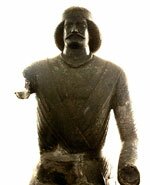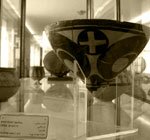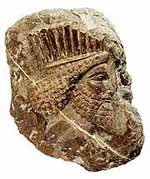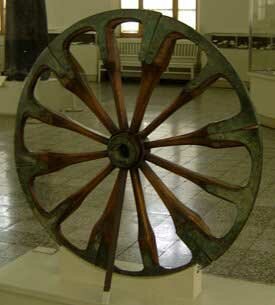|
FOR MORE INFORMATION ON DESERT TRAVELS AND TOURS IN IRAN CONTACT : ARASH KAZERANI Travels in Iran |
|||
|
Iran desert travels |
|||
|
National Iranian Antiquity Museum The National Museum of Iran is an archaeological and historical museum in central Tehran. This museum consists of three floors and a huge storage area. Its architecture was derived from Sassanian era and particularly the entrance arch is a complete replica. This building houses ancient Persian antiquities including pottery vessels, metal objects, books, coins etc. The museum was inaugurated in 1937.
Parthian figure, possibly General Surena Luristan - Iran
Antiquities are divided into several main categories of Pre-historic, pre-Islamic and Islamic periods.
In antiquity the Persian Empire developed into a multinational empire, encompassing an enormous amount of territory. The Achaemenian king Cyrus the Great was able to expand his territory and establish a new order throughout the entire Middle East at an early stage, making the Achaemenian dynasty (558-330 B.C.) the most powerful royal line of his time.
Lion rhyton, 550-450 B.C.
Elamite painted vessel from 4th millennium B.C.
|
The most notable pieces of diverse artwork produced during the Sassanid period are magnificently decorated silver bowls. Objects made of silver; ceramic and glass from the early Islamic period are the focal point of the museum.
Not only do they exhibit Sassanid influence but also original elements in form and decoration, which at a later stage culminate into an independent Islamic pictorial language. Islamic period arts and antiquities are housed in a separate building which has a huge collection of Persian miniatures, manuscripts and inlaid craft works.
An elaborately decorated Koran parchment manuscript from the 9th/10th century is part of the collection, symbolizing the beginning of profound cultural changes, encompassing the region of ancient Iran.
AN ANCIENT WOODEN WHEEL WITH SPOKES, STILL IN EXCELLENT CONDITION IS ON DISPLAY AT IRAN'S NATIONAL ANTIQUITY MUSEUM.
Article by : Masood Kazerani Hamsayeh.net May 18/09 |
||
|
FOR MORE INFORMATION ON DESERT TRAVELS IN IRAN CONTACT THE AUTHOR: ARASH KAZERANI Travels in Iran |
|||




